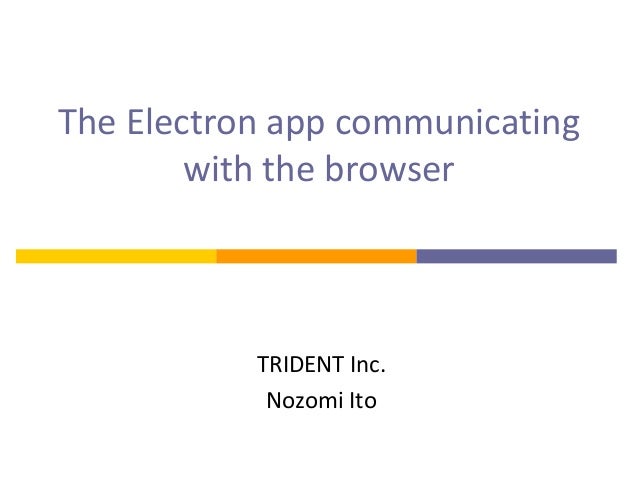
dmg or whatever file from your Electron app, then send that file to them with some basic instructions.
#Electron app wrapper how to#
Take a look at the electron-packager and electron-builder docs to get an idea how to build an. The cleanest way to do this would be to tie up all loose ends in your current app flows, block all unfinished roads in it and compile it for whatever platform your client requested the demo for.
#Electron app wrapper code#
If your client wants to actually have a hands-on demo with the app, you need to have some form of basic code distribution. You can just record how the app works with some example data, add some written or audio explanation to it, and let them enjoy the smooth ride. This is your quickest and easiest solution if your client just wants to be kept in the loop and see some eye candy. To demo your desktop app to an off-site client, you can either make a presentation with screenshots detailing the current user flow, or compile a sandboxed demo version of your app and send it over to them. This means if you want to move it to the web, you have to give up all the Electron APIs that access the local system and you're left with a basic node.js app, which is most likely not desirable.

Blazor makes a concerted effort to be interoperable with JavaScript. Both client and server code is written in C, allowing you to share code and libraries. Blazor apps are composed of reusable web UI components implemented using C, HTML, and CSS. Remember that we gave our entire navigation and each participant tile the draggable property.įor every draggable element on the screen - the navigation, the local participant tile, and every remote participant we add - we call the exported setupDraggableElement() function in drag.js.You have other options to do a long distance demo of an Electron appĮlectron is basically a shell to run node.js apps on the desktop. Blazor lets you build interactive web UIs using C instead of JavaScript. This is where our drag.js module comes in. They should be able to drag elements of the call around on their screen in a way that is most convenient for them. The entire point of our call overlay application is to make it convenient for users to interact with background apps while in a call. Making participants and controls draggable Electron enables you to build cross-platform desktop applications using Chromium and Node.js. To clone and run Daily’s call overlay Electron demo, run the following commands in your terminal: git clone i & npm start
#Electron app wrapper full#
If you just want to see how you could implement drag-and-drop functionality with JavaScript part one isn't that important, but if you want to have the full context of the application we're building you'll get much of the necessary information in part one. If you haven't yet read parts one and two of this tutorial, we encourage you to do so. This feature will allow users to position their participants in whatever way is most convenient for them and the other applications they may be using behind the call.

Next, we'll go through adding the ability for users to drag participant tiles and call controls wherever they want on the screen.

The app allows users to participate in a Daily video call and see all participants while also being able to interact with background applications. In parts one and two of our Electron call overlay tutorial, we went through creating a full screen Electron app with Daily's call object. This post is part three of a three-part series on how to build an Electron call overlay app using daily-js.


 0 kommentar(er)
0 kommentar(er)
